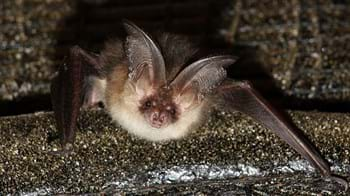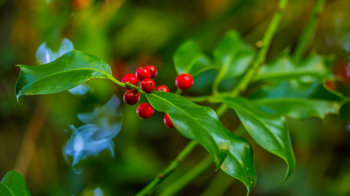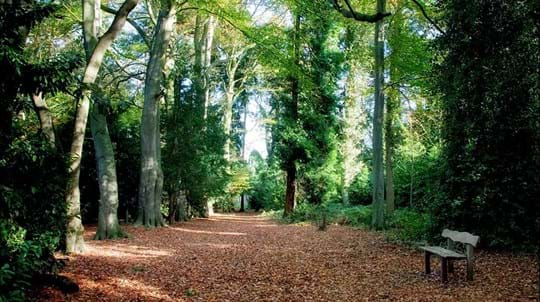
Tattershall Carrs
Tattershall

Woodland Trust wood
29.00 ha (71.66 acres)
TF216589
Explorer 261
OS Landranger 122
Tattershall Carrs is one of the last remaining remnants of ancient wet alder woodland that once ringed the margins of the Fens. It also boasts a fascinating history - the wood was once part of RAF Woodhall Spa during the Second World War and was home to the famous 617 'Dambusters' squadron.
Tattershall Carrs is actually two woods – Tattershall Carr and Tattershall Thorpe Carr – linked by a narrow green lane between high hedges. They are largely alder carr and together make up the largest and best example of this habitat in Lincolnshire. Carr means simply a wet woodland. The woods are of national importance and have an
excellent variety of animals and plants.
Features
- Parking nearby
- Public access
- Autumn colour
- Spring flowers
- Broadleaved woodland
How to get to Tattershall Carrs
The Carrs lie to the west of the small hamlet of Tattershall Thorpe in Lincolnshire, halfway between Horncastle and Sleaford.
From Sleaford, follow the A153 towards Horncastle. Take the left hand turning for the B1192 (Thorpe Road) at the junction between Tattershall and Coningsby. The woods are then on the left hand side as you reach the small village of Tattershall Thorpe.
The nearest bus stop is situated on Tattershall High Street (A153) approximately 1 mile to the south of the woods.
For more information on public transport, visit traveline.info.
The nearest train station is in the village of Metheringham, approximately 11 miles away.
For more information on public transport, visit traveline.info.
Facilities and access
There are a number of access points into both woodlands from the south. Permissive footpaths in the wood are well defined and with natural, unmodified surfaces. These can become quite muddy and rutted in wet conditions - wellies recommended! The terrain of the site is fairly flat.
There is no formal car park at the woods, but it is possible to park less than 500m away.
There are no public toilets within walking distance of the woods, however the Blue Bell Inn just off the road between the two carrs serves drinks and food with facilities for customers.
Wildlife and habitats
Animals
The woodland here is home to at least eight recorded species of bat. Tattershall once hangared the famous Dambusters squadron, but today, three of the old bomb shelters have a new incarnation: as roosting boxes for hibernating bats. The Carrs are an important feeding and resting ground for a variety of them, most notably Daubenton's and pipistrelle. Moths such as the herald moth overwinter in the shelters too.
Invertebrate surveys have shown that these woods are especially important for beetles, and nationally scarce species of longhorn and fungus weevil have been found here.
Both green and great spotted woodpeckers breed in the woods. In summer they are also joined by migrants such as garden warbler, cuckoo and the increasingly rare turtle dove.
Trees, plants and fungi
Tattershall Carrs is locally famous for its displays of snowdrops and bluebells, although other woodland floor flowers bloom here too.
The wet areas are ideal for ferns - keep an eye out for broad buckler-, lady- and male-ferns. You might also spot the delicate climbing corydalis in bracken stands, as well as raspberry and red currant.
The streams and ditches are bordered by patches of opposite-leaved golden saxifrage, among which the much rarer alternate-leaved species also grows.
Habitats
Tattershall is famed for its ancient tree heritage, its fine specimens of alder ensuring its designation as a Site of Special Scientific Interest (SSSI). This ancient, wet, alder-dominated woodland once ringed the margins of the Fens but now just remnants remain.

A lasting legacy
This wood is just one of many to have been protected by gifts in wills, securing it for generations to come. Your legacy gift could also make a real difference to woods, trees and wildlife.
Learn what your gift could meanAbout Tattershall Carrs
History
Tattershall Carrs has an illustrious wartime history, and even today is filled with echoes of the past.
RAF Woodhall Spa
During the Second World War the Carrs were part of RAF Woodhall Spa, and evidence of this activity is all around. Concrete bases of Nissen huts are scattered throughout the wood, though many are now hidden outlines. In contrast, the Stanton bomb shelters, sewerage ejector and transformer houses are prominent reminders of the woodland’s wartime role. Larger buildings such as the Sergeants' Mess, NAAFI and office blocks remain on the northern edge of the wood, and form the WWII Thorpe Camp Preservation museum.
The Carrs were often used as a haven for the military; at one stage no less than 1,400 airmen were hidden beneath the woodland canopy. The trees protected the huts from Nazi bombing raids – the runway was hit a few times but those blocks never were.
In 1943 Tattershall Carrs also hosted the famous 617 ‘Dambusters’ squadron, who went on to achieve legend status when their daring operation ‘Chastise’ saw them successfully attack three major dams in Germany. Guy Gibson flew his tragic last mission from Woodhall Spa in 1944, the year Leonard Cheshire won his Victoria Cross.
Blue Bell Inn
No visit to Tattershall would be complete without a pint in the village’s Blue Bell Inn, but be sure to look up. The pilots stuck a penny in the rafters before each raid, which they’d use for a drink on their return. There are scores still up there – a poignant reminder of those who never returned.
Battle of Britain Memorial Flight
During the summer visitors to the woods may be transported back to that time by the sound of the Second World War Merlin aero-engines powering the Lancasters, Spitfires and Hurricanes of the Battle of Britain Memorial Flight from nearby RAF Coningsby as they pass by on their way to a display.













































